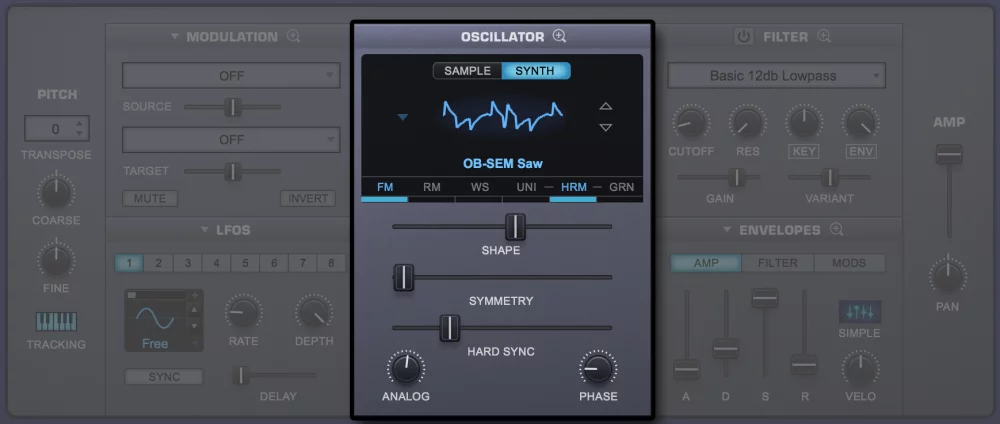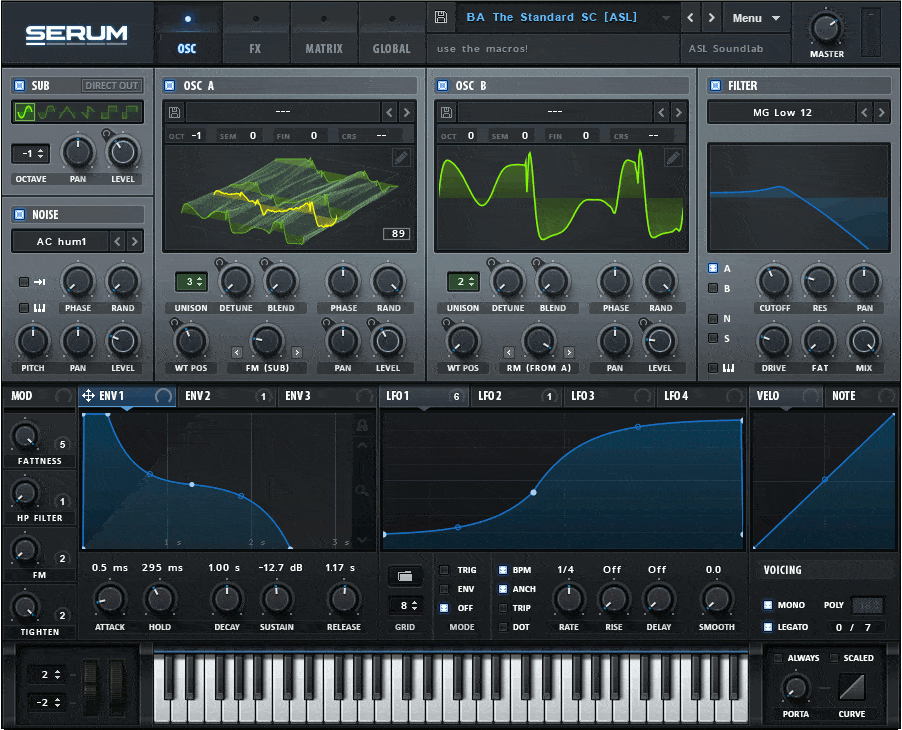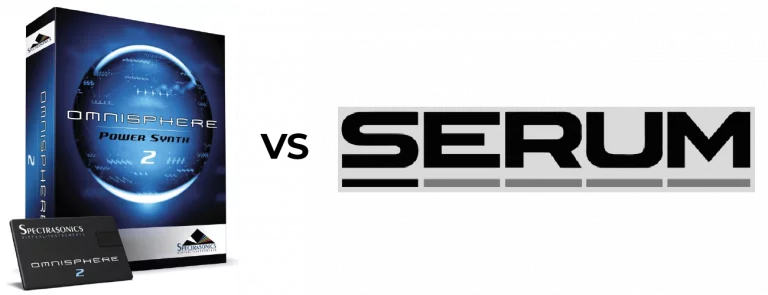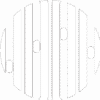Last Updated on August 10, 2022 by IDS Team
Omnisphere and Serum: these two giants of the software synth world. We’ve all wondered how they compare to each other, and today, after thorough analysis of both, we will come up with a winner.
It is, however, important to note that this article isn’t an attempt to determine which one of these beastly VSTs is ‘the OVERALL BEST’. This a far too subjective decision for one humble reviewer to ascertain, so please note that this is based on our personal experience and preferences.
What you are about to read is merely a comparison of two industry leading virtual instruments in order to help you understand the differences and similarities between them. If you’re on the fence about purchasing either one, or if you own both and struggle with which one to use for a particular task, you will benefit from the information in this article.
If you’re not familiar with either of these, we strongly recommend checking them out. We’ll start with the most obvious differences, then we will break things down into various sections:
You should also check out and other plugins for free for 3 days then rent to own them.
Omnisphere 2 vs Serum: Obvious differences
Omnisphere 2 is an 8-part multitimbral VSTi, meaning you can play up to 8 different sounds at once with one instantiation. Serum can only play one sound at a time, so if you want to play more than that, you’ll have to have to use a different instantiation for each different sound you use from it. Spectrasonics hasn’t provided a demo of Omnisphere 2 yet, so there is no way to test it out unless you buy it. A demo version of Serum is available with .
To get more acquainted with each synth, please check out the links below:
Omnisphere 2 vs Serum: Oscillators

Omnisphere 2 comes with over 400 new waveforms each of which is a morphing wavetable. Ethnic instruments and unusual sound sources like a burning piano are also included and can be used as oscillators. Additionally, you can add your own sounds and use those as oscillators or mangle them in the granular synthesis section.
However, when compared to other dedicated granular synths like Mangle or PadShop, Omnisphere 2 falls a bit short in terms of editing features.

Serum on the other hand, comes with 144 wavetables and also gives you the ability to draw waveforms or load your own sounds and use them as oscillators.
Aside from being an “advanced wavetable synth”, Serum is also capable of performing additive and VA synthesis with classic waveforms (saw, square etc.) + a sub oscillator + noise oscillator.
Because of the array of waveforms and synthesis techniques that can be applied in both synths, they both could very well be referred to as modern hybrid synthesisers.
Omnisphere 2 vs Serum: Filters
Serum has a variety of filter types. All the filters from Xfer’s LFOTool are included in addition to some new ones like Flangers, Phasers and the dirty sounding French LPF. There are also Dual Filter types allowing you to morph between filter types.
Omnisphere 2 boasts a more flexible filter engine and 8 new filters giving you the ability to create your own filter sound with stereo control, drive and a host of other parameters to further customize your filters. Also, it now includes all of the filters from GForce Software’s virtual synth, “impOSCar”.
Omnisphere 2 vs Serum: Modulators
Personally, my favorite thing about Serum’s modulators is how easy it is to drag and drop a modulation source to a destination.
This makes for a much faster workflow when creating or editing complex a patch. Then there are the drawable LFOs, Envelopes and Macros which, depending on your preference, are more fun to play with than mousing around with percentages or virtual knobs.
Omnisphere’s Modulation Matrix is unbelievably massive and flexible!
Almost every parameter can be modulated and there are a plethora of modulation sources and targets.
All 4 Effect Racks’ parameters, all the granular parameters, all the FM parameters, numerous parameters in the arpeggiator and envelopes can all be modulated by a multitude of sources.
But with all this modulation power, there is no drag and drop ability in Omnisphere 2
Omnisphere 2 vs Serum: Effects
In addition to Serum’s classic synth effects and advanced effects such as a multiband compressor, Serum can be used as a dedicated FX processor as well. Off the top of my head, the only other synths I can think of that have this feature are Native Instruments Absynth 5, FM8 and Reaktor 6.
The results of running an audio source through an effect with synthesizer parameters can be extremely inspiring and a lot of fun!
Omnisphere 2 has a wider variety of effects. Vintage effects like echoes, choruses and compressors as well as various reverb types are included.
And remember, all of the parameters in each effect can be modulated. This does come at the cost of higher CPU usage, however. I’d be curious to see what kinds of sounds could be generated if Omnisphere 2 was able to be used as a dedicated FX processor, but that feature isn’t available.
Overall Winner
I think Omnisphere 2 has a better sound library and is well-rounded as far as sound selection thanks to some of the best sound designers of our time, Eric Persing and Diego Stocco. Therefore, it takes the prize.
Serum may have a more flexible wavetable engine and deeper sound design capabilities with the wavetable editor, formulas and additive engine.



